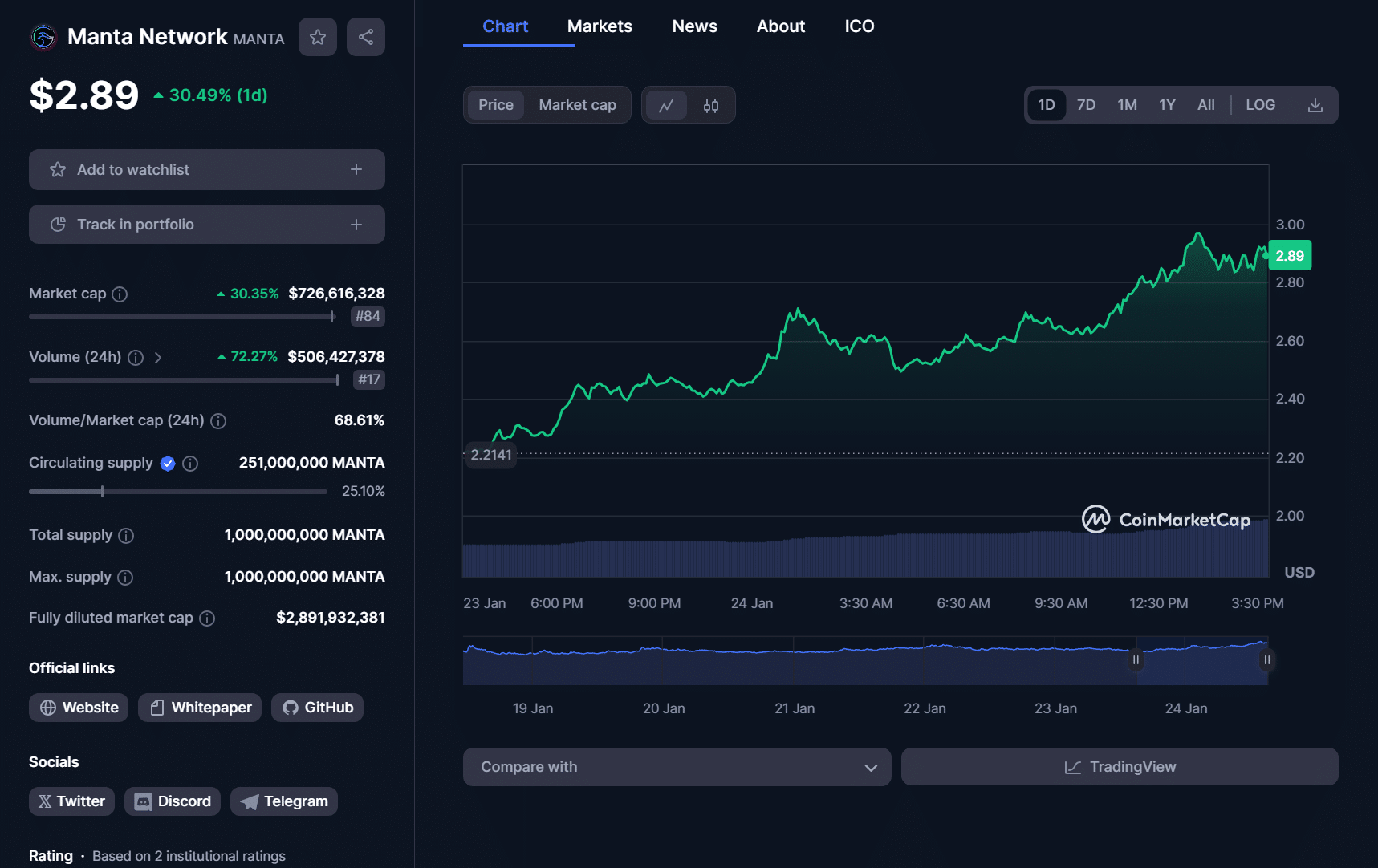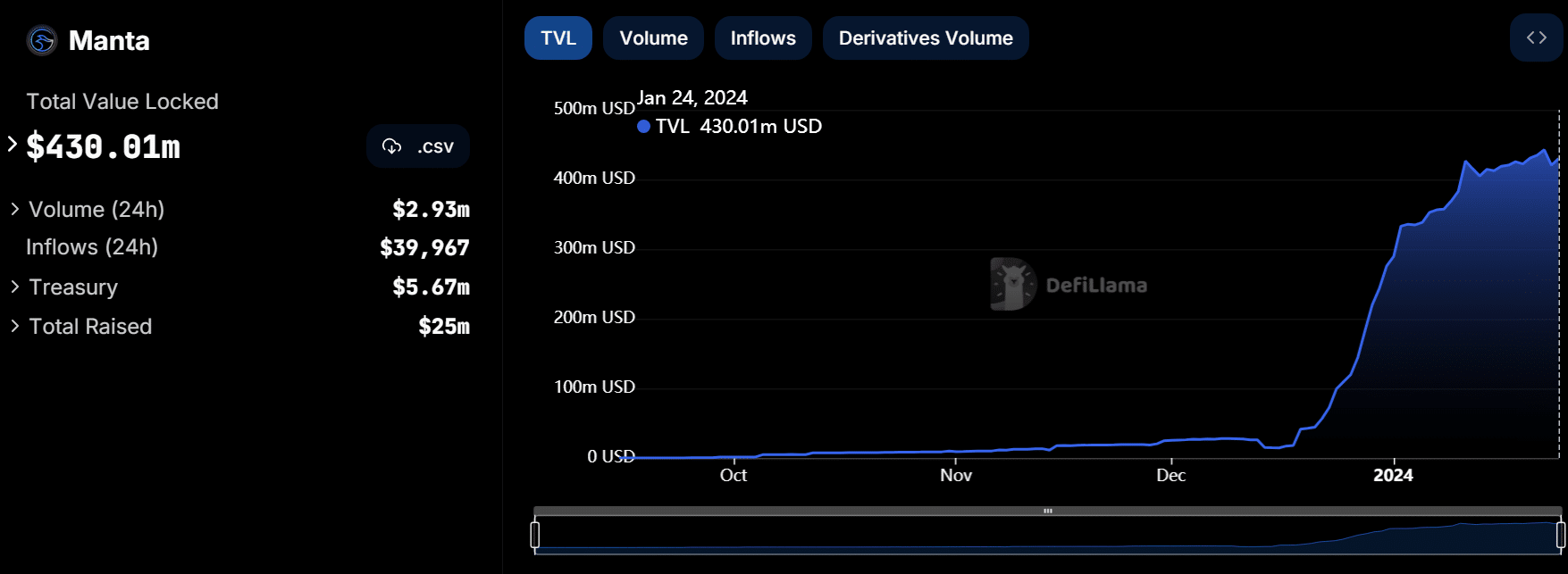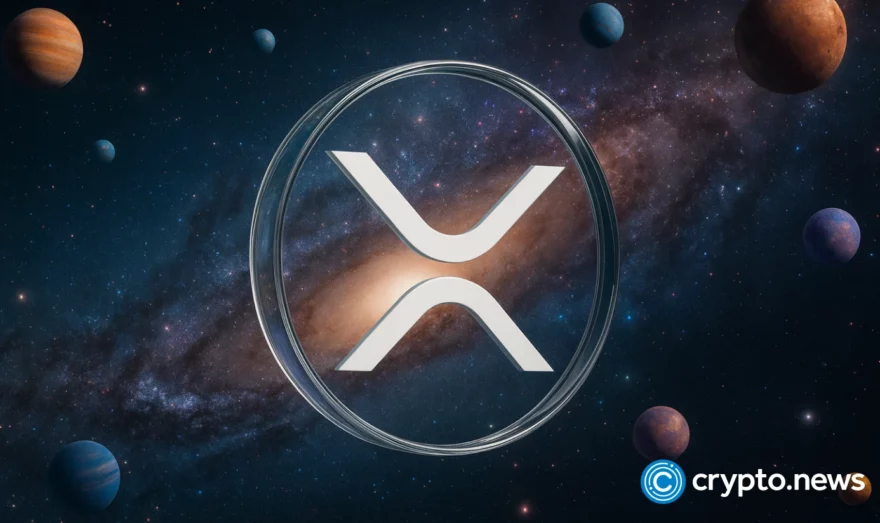Manta gains 30% in 24 hours

The price of Manta Network’s native token surged to a new all-time high on Jan. 24, changing hands for nearly $3 less than a week after an airdrop for early supporters.
Manta Network (MANTA) saw double-digit gains as the cryptocurrency nestled around the $2.89 price level at press time, per CoinMarketCap. In 24 hours, the token increased by 30%, and its trading volume jumped above $500 million across venues like Binance.

Manta’s market capitalization earned the coin a spot among the top 100 cryptocurrencies on the market. Additionally, the protocol’s total value locked (TVL) has grown in leaps and bounds since launching in January.
According to DefiLlama, there is over $430 million worth of TVL on Manta across all blockchains. This makes it one of the 10 largest decentralized protocols right behind Coinbase’s layer-2 network Base, Avalanche L1, and Polygon, an Ethereum scaling solution.
Manta has seemingly enjoyed this initial success shortly after launching its token via the Binance Launchpad as the 44th cryptocurrency on this platform. Other protocols like Xai launched in the same way saw ascending price movements in the days after rollout.
Built with Celestia’s modular data availability solution and Polygon’s developer stack, Manta offers users a multi-modular blockchain with support for two popular crypto technologies: zero-knowledge or zk and Ethereum Virtual Machine-compatibility, aka EVM.
The protocol achieves this through two platforms namely Manta Atlantic and Manta Pacific. Together, the pair were marketed as a Polkadot-based zk L1 network and a layer-2 blockchain with EVM support respectively.

Early testers and supporters were reportedly rewarded with an airdrop, a distribution of free tokens common amongst burgeoning crypto protocols aiming to capture users and decentralized finance participants.
Airdrop recipients were said to receive four-figure sums in free MANTA tokens after spending next to nothing farming the network.
Following the event, Manta’s network was hit with a sophisticated cyber siege known as a DDoS attack. However, the protocol tackled the assault and return operations to normalcy swiftly.















